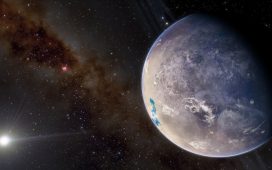Each night an annual parade of constellations passes above our heads but there are always exciting, less frequent events to look out for in the sky. The year 2025 is no exception. The night sky is more spectacular from a dark country sky, but you can see these events even if, like many others, you live in a light-polluted city. For most events you do not need a telescope or binoculars.
March and September: eclipses of the moon
Total eclipses of the moon are more common than those of the Sun. They can be seen from all the regions on Earth where it is night.
Unlike eclipses of the Sun, lunar eclipses are safe to watch with the unaided eye. They are also safe to photograph. A tripod will help, as will a camera or phone able to take timed exposures.
On the evening of Friday 14 March, people in Aotearoa New Zealand will be able to see a totally eclipsed moon as it rises above the horizon just after sunset. Watchers in eastern Australia will also get a brief glimpse of a partially eclipsed moon after moonrise, for 34 minutes from Sydney, 43 minutes from Brisbane and 16 minutes from Cairns.
During the early morning of Monday 8 September, the full moon will move into the shadow of Earth and be totally eclipsed. The moon will turn a red or coppery colour, because sunlight is bent or refracted by Earth’s atmosphere on to the moon. The bent light is red, as we are looking at the reflection of sunrises and sunsets from around the globe.
The eclipse starts with Earth’s shadow gradually covering the moon over about an hour. After totality the shadow takes about an hour to leave the moon.
Seen from Australia’s east coast, the total eclipse will last from 3.30am to 4.53am on 8 September. From New Zealand, this will be from 5.30am to moonset; from South Australia or the Northern Territory, 3am to 4.23am, and from Western Australia 1.30am to 2.53am.
March: Saturn’s ‘disappearing’ rings
Gazing at Saturn and its rings through a telescope is always a thrill, whether you are seeing them for the first or the 100th time. However, in early 2025 the rings will seem to vanish as Earth passes through the plane of the rings.
This phenomenon occurs twice during Saturn’s 29-year path around the Sun, that is, at roughly 15-year intervals. Unfortunately, on 24 March, the date when this will occur, the planet will be too close to the Sun in the sky for us to observe.
However, in the evenings until mid-February and in the morning from late March, we will be able to see Saturn with quite narrow, tilted rings.
Note that a small telescope is needed to see Saturn with or without its rings. If you don’t have one yourself, you can go on a night tour at a public observatory like Sydney Observatory or an observing session with a local astronomical group, such as those at Melbourne Observatory with the Astronomical Society of Victoria.
May and December: meteor showers
The two main meteor showers of the year are the Eta Aquariids and the Geminids.
In 2025, the Eta Aquariids are best seen on the morning of Wednesday 7 May, while the Geminids will be most visible on the mornings of Sunday 14 December and Monday 15 December.
This year, viewing conditions for both meteor showers are favourable, in the sense that there will be no bright moon in the sky during those mornings. To see them, look towards the north-east (Eta Aquariids) and north (Geminids) before dawn starts brightening the sky.
The darker the sky you can find, the better. Keep away from street lights or any other light.
after newsletter promotion
January, April and August: planets
The five planets you can see with the naked eye – Mercury, Venus, Mars, Jupiter and Saturn – move across the sky along a line called the ecliptic.
As the planets move, they sometimes appear to pass close to each other and take on interesting patterns. Of course, they only appear close from our point of view. In reality the planets are tens or hundreds of million kilometres apart.
In 2025, these patterns include:
-
18-19 January: the brightest planet, Venus, is close to the ringed planet Saturn in the evening sky.
-
1-15 April: Mercury, Venus and Saturn form a slowly changing compact group in the eastern sky near sunrise.
-
12-13 August: Venus and Jupiter, the two brightest planets, are only separated by two moon-widths in the morning sky.
June and August: constellations
As the year progresses, different constellations appear in the evening sky. The perpetual chase of Orion and Scorpius (the hunter and the scorpion) across the sky was noted in 2024.
In 2025, keep an eye on the Southern Cross (known as Crux to astronomers) and Sagittarius (the archer).
The Southern Cross is the best-known constellation in the southern sky. It is easy to find, as it is made up of a compact group of bright stars in the shape of a cross.
Two pointer stars from the neighbouring constellation of Centaurus, the centaur, also help to show its position. From Sydney and farther south, the Southern Cross is always above the horizon. However, in the evenings, it is best viewed around June, when it is high in the southern sky.
The constellation Sagittarius is next to Scorpius. In the evenings, it is best placed for observation in August, as at that time of the year it is directly overhead.
A join-the-dots look at the brightest stars of the constellation gives the impression of a teapot, and it is often referred to by that name. Sagittarius is an important constellation for Australian astronomers, as it contains the centre of the Milky Way galaxy.
This article was originally published in the Converation. The information in this article comes from the 2025 Australasian Sky Guide. The guide has monthly star maps and has much more information to help with viewing and enjoying the night sky from Australia and Aotearoa New Zealand











